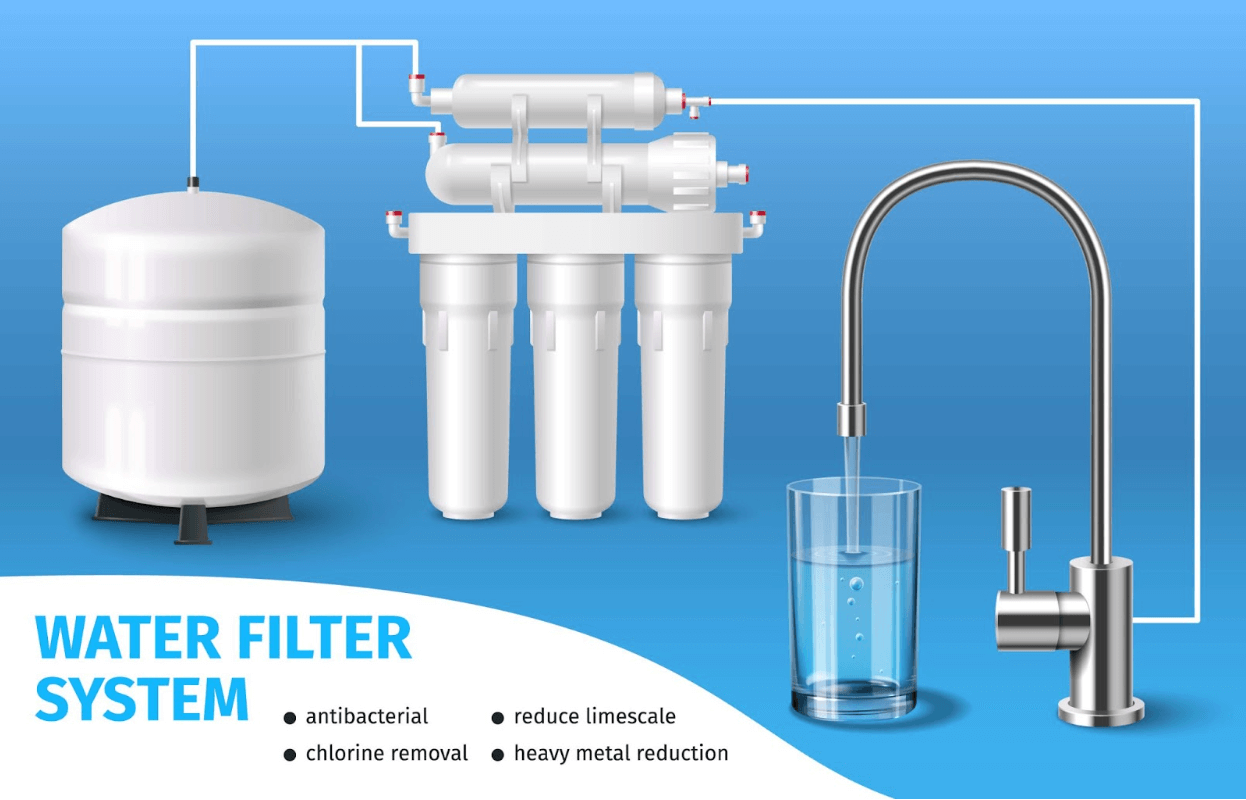Filter cartridges are like the unsung heroes in our mission for crystal-clear water. Just to show you their significance, the market, which stood at a whopping $30.62 billion in 2022, is set to jump to $54.48 billion by 2030. This means their demand will continue to increase, and you’ll always have plenty of options to choose from.

But, with so many choices out there, how do you find the best one? Well, using a secondary device like KDF water filters can enhance filtration. However, a crucial aspect to always check is the micron rating. Micron ratings are like the cartridge’s superpower, telling you the tiniest of particles they can catch to keep you out of harm’s way.
In this article, we’ll explore the ins and outs of micron measurement, empowering you to make an informed decision when looking for a water filter.
Read on.
Understanding Micron Ratings
Micron rating measures the size of particles a filtration media can remove from water.
Filters with lower micron ratings are your go-to for trapping smaller particles. For instance, a 2-micron filter is excellent for capturing sediments. Conversely, a 20-micron filter is better suited for larger particles. If the rating is too high, more minor impurities like bacteria—usually 1 micron or less—might get through. If it is too low, the filtration cartridge might clog up faster (this could mean more cartridge replacement than necessary).
Choosing the correct size is crucial for removing specific pollutants from your water.
The Science Behind Micron Ratings and Particle Removal
In order to understand micron ratings, we must first understand what a micron is.
Microns or micrometers are used to measure particle size in water. It’s equivalent to one millionth of a meter. These particles, often termed contaminants, encompass a range from sediments and debris to bacteria and viruses.
The science behind micron ratings is filtration. As liquid flows through a cartridge with a specific rating, particles exceeding that size become trapped within the media, thus preventing their passage.
It’s worth noting that the micrometer is not the only way to access filtration performance. Other considerations, including flow rate, pressure drop, and cartridge materials can determine its effectiveness.
Types of Filters and Their Micron Ratings
There are different types of water filtration cartridges, each with a specific micrometer size or classification that dictates their particle removal abilities. They include:
- Sediment filters: Sediment water filters target larger particles like sand, dirt, and debris. Micron ratings typically range from 2 to 100 micrometers, making them effective for basic water filtration.
- Activated carbon: With a micrometer size of around 0.5 to 50 micrometers, activated carbon filters can easily handle organic compounds, chlorine, and odor.
- Reverse osmosis: Offering high precision, these devices boast a micrometer size of as low as 0.0001 micrometers. They effectively remove minerals, salts, and microscopic contaminants.
- Mineral water filters: While not defined by microns, mineral water filters add beneficial minerals to water without altering particle sizes.
- KDF water filters: KDFs enhance water quality by addressing heavy metals and chlorine through redox reactions. They can be used to supplement other filtration media.
Why Micron Rating Matters in Filter Selection
Beyond affecting a filter’s ability to catch particles, there are other reasons why micrometer size matters. These include:
- Water safety standards: Water sources differ in impurities. The right micron rating removes specific contaminants, ensuring clean water solutions.
- Flow rate: Filtration cartridges with smaller micron ratings have a slower flow rate due to denser media. Larger models allow for faster flow. So, try to balance the flow rate and filter efficiency when buying.
- Filter lifespan: Smaller-rated filtration media trap finer particles but clog faster, needing more maintenance. Larger-rated filters last longer with fewer clogs, impacting costs and efficiency.
- Application: Drinking water may need a sub-micron rating for bacteria, while industries focus on bigger particles. It is not advisable to use an industrial filter for your home plumbing.
Maintaining and Replacing Your Filter Cartridge
Buying a filtration cartridge with the appropriate micrometer size will boost your purification efficiency, however, like every other device, after a while, things start to degrade, which is why you need to stay on top of filter maintenance and filtration system upgrades to continuously enjoy better quality of water.
But how do you know it is time for a replacement filter cartridge? According to the experts at Filterway, the signs to check for include:
- Decreased flow
- Taste and odor issues
- Visible water contaminants
- Change in water clarity
Every filtration media has a recommended lifespan. If it’s been exceeded, you should replace it for optimal water quality.
Conclusion: Making the Right Choice for Water Purification
Hopefully, this micron ratings guide has clarified the fine points of micrometer sizes so that you know what to look for when selecting filtration systems. Always keep in mind that investing in dependable water treatment methods is essential to ensure your safety and well-being.
